Why Onboarding is Necessary?
What if we tell you that onboarding is the deciding point of your customer retention rate? That’s right! The study revealed that 86% of clients would stay loyal to a business if they received an onboarding communication and had access to educational materials in advance. So, let’s dig deeper into the importance of it and help you craft a successful onboarding plan.
Onboarding New Customers | Why is it crucial?
Picture it this way. You moved to a new city for the first time where you don’t feel welcomed. You are likely puzzled, wishing you had a sort of roadmap prepared to adapt to this new place. Your new users face the same issue when signing up for your SaaS product.
That’s why the goal of your business plan should be to reassure the value of your product meets your new clients’ demands. Otherwise, they may end up questioning whether they made the right decision or whether the product is worth the money.
Still think that the onboarding stage is not critical? Here are the main reasons why you should consider it for your business objective:
- The report done in 2021 unveiled that poor onboarding is the 3rd most crucial reason for customer churn
- 63 % of clients take the onboarding process into account when purchasing
- It is the right time to highlight the value and best features of your product
So, it’s beyond a question that the onboarding stage should be well thought out and prepared. We put together several handy tips to assist you in the creation of a successful SaaS onboarding. Let’s dive in!
Pre-onboarding
Before you get into the onboarding, it is vital to understand how you can help your newcomers get started.
Let’s recall the sales funnel that kicks off with awareness leading to the ultimate purchase goal. With this in mind, make sure to offer as many helpful materials as possible which could shape a pathway to your product adoption. The materials can be:
- Educational Videos
- Knowledgebase
- FAQs
- Blog posts
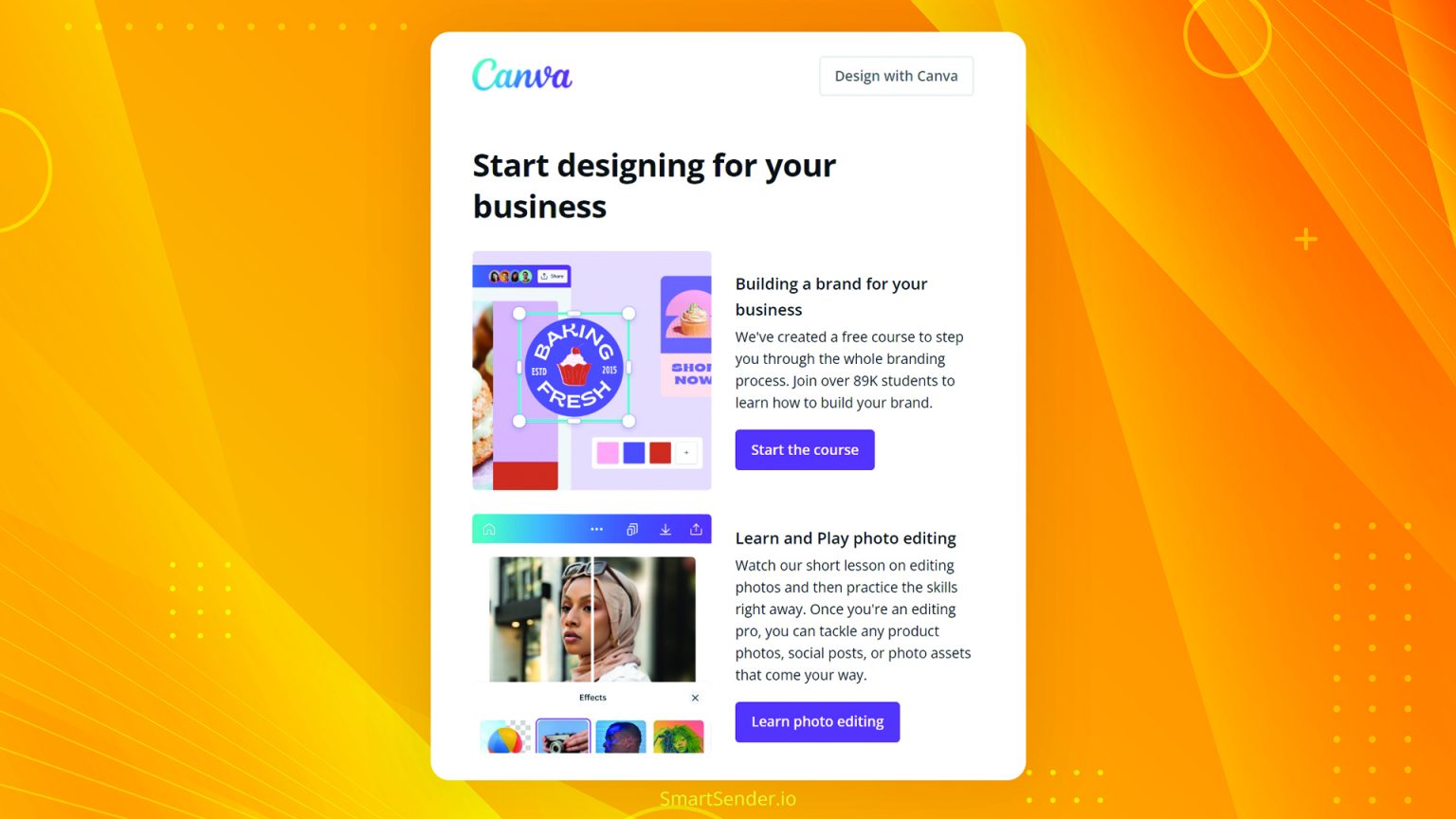
Once you single out all essential materials, it’s time to define your point of communication, which must be done both automatically and manually. Manual communication can include direct video calls with your new user, phone calls by your customer support team, etc. However, the main player here is email automation. So read on to unveil how to put good use of email automation for your powerful onboarding plan.
1. Automate a Welcome message
Welcome messages are the first impression of your brand and the initial dialogue with your newcomers. The catch is picking the right welcome message that gets them hooked straightaway.
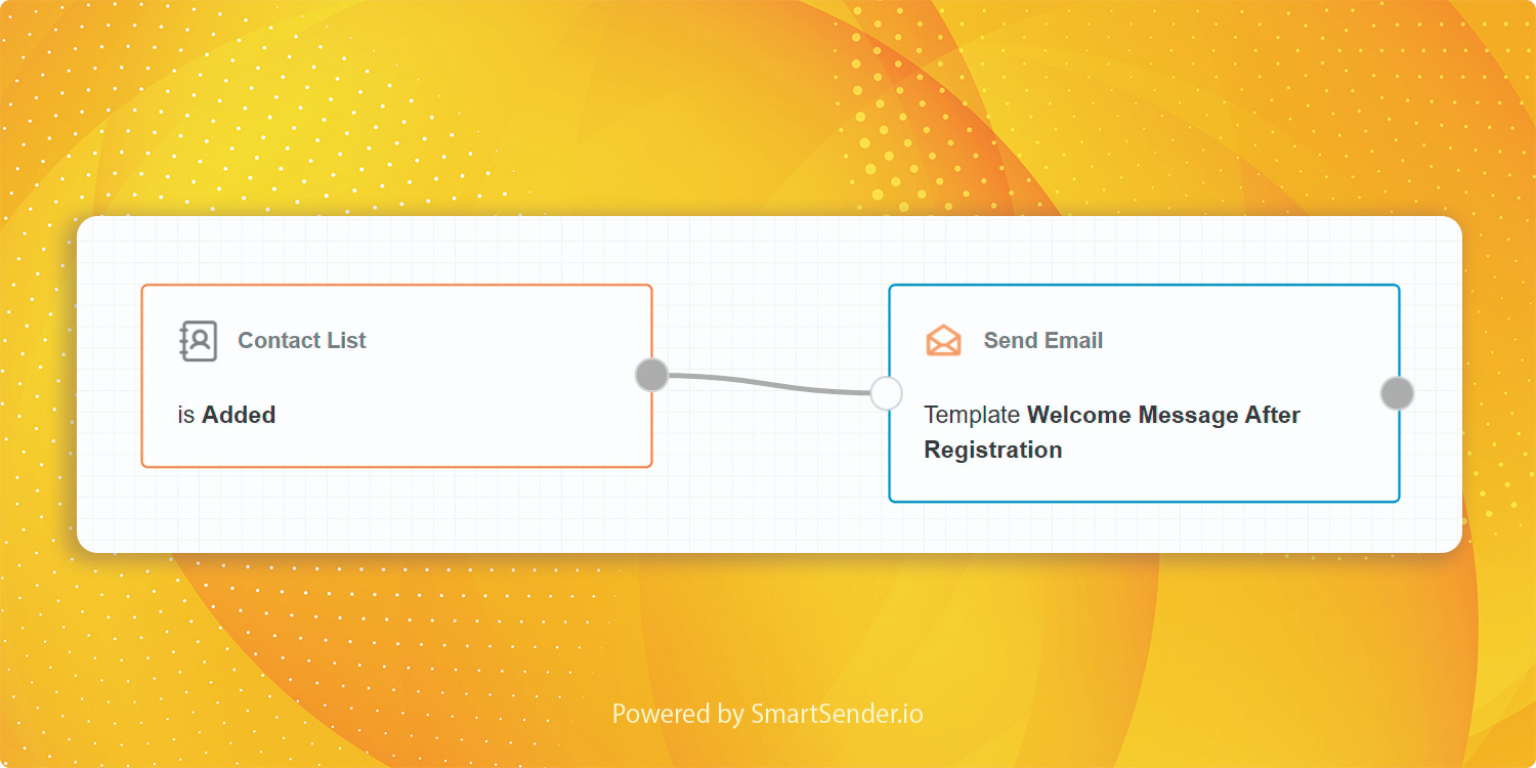
Pick a marketing automation platform and easily automate your welcome emails. Then, based on your customer behavior and time, you can send follow-up emails.
Say the greeting message shows no engagement. Create an automated workflow with Wooxy.com by triggering a follow-up email after 2-3 days of inactivity. You may even choose ready-to-use templates from our Marketplace and import all segments, variables, and templates to your account.
2. Include Walkthrough Process
One of the key elements for your product adoption step is understanding the common challenges your clients will face while using it. Try to predict their needs, place yourself in their shoes and help guide them through your product’s journey.
Here is an excellent example of onboarding from Figma that welcomes new clients and helps them get started.
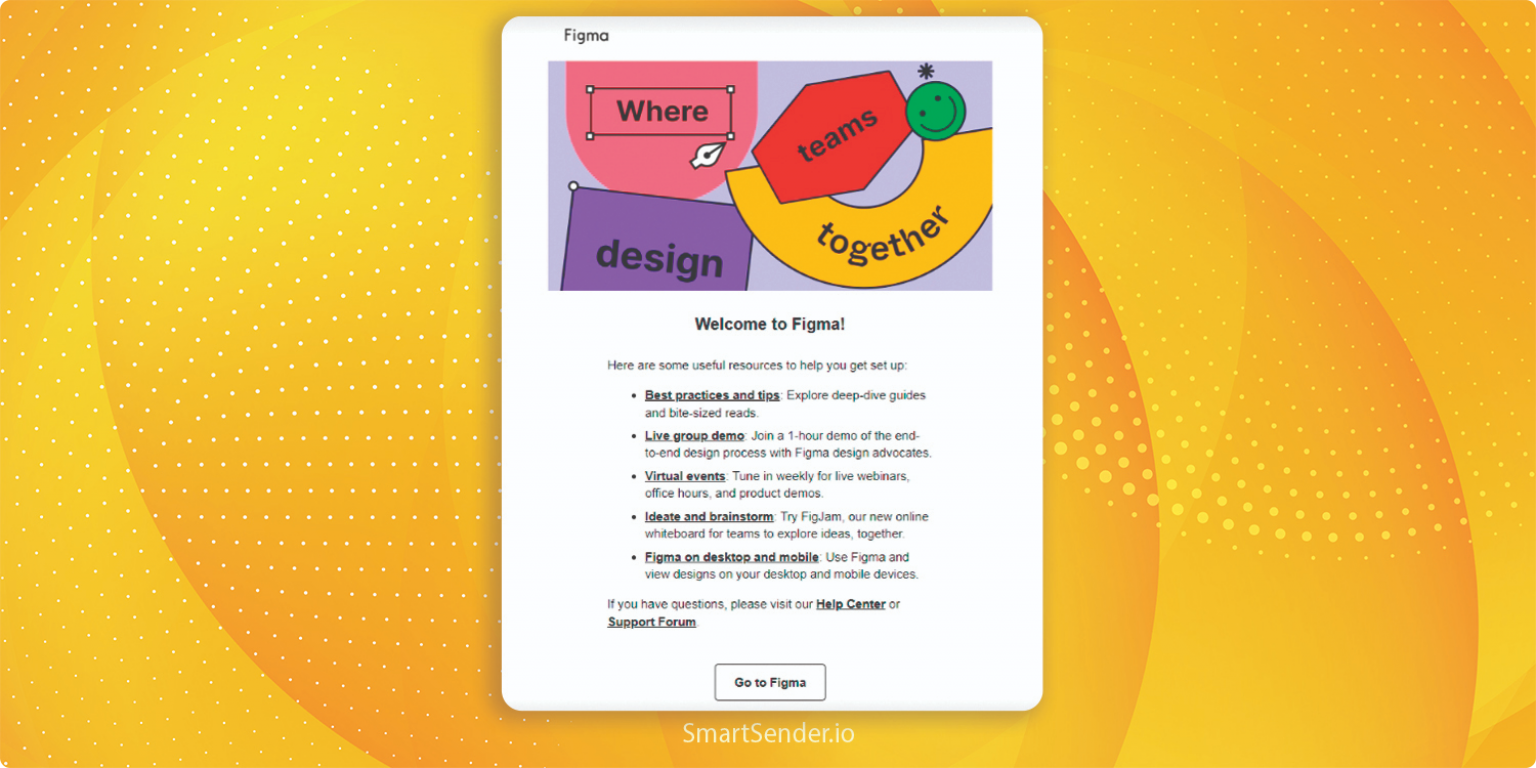
No matter how incredible your product or service is, if you don’t make it simple for your users, you will end up losing them too quickly. A walk-through journey for newcomers should be smooth by including your product’s standout and complicated features.
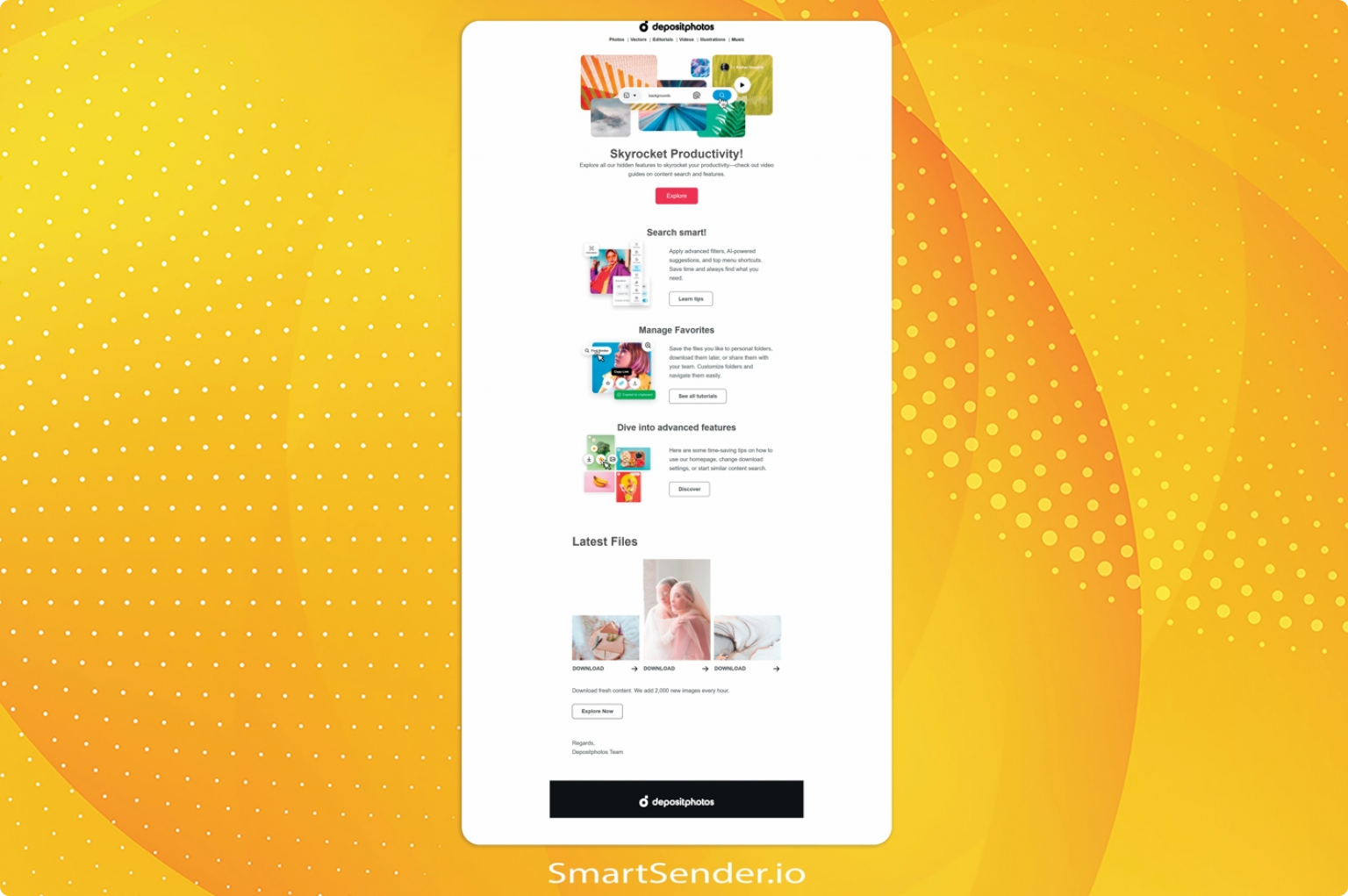
Take the Deposit Photos welcome message as an example. Besides showing all available materials and advanced features, they also push users further in their journey. By offering special deals and clear CTA, they encourage newcomers to convert into buyers.
3. Convert Free Trials into Paid Subscriptions
The ultimate goal of onboarding is to push free trial users toward paid or premium plans. But the main question is how to do it smoothly. Here are some ideas to bear in mind:
- Offer the free option of a Premium subscription
- Kickstart your email with the use of FOMO (Fear of Missing out)
- Don’t forget about clear CTA
Take a look at the Linkedin example. The company presents the best features of a Premium account and offers a free month of its premium plan. Allowing users to test out the benefits of paid option fosters trust and encourages customer engagement.
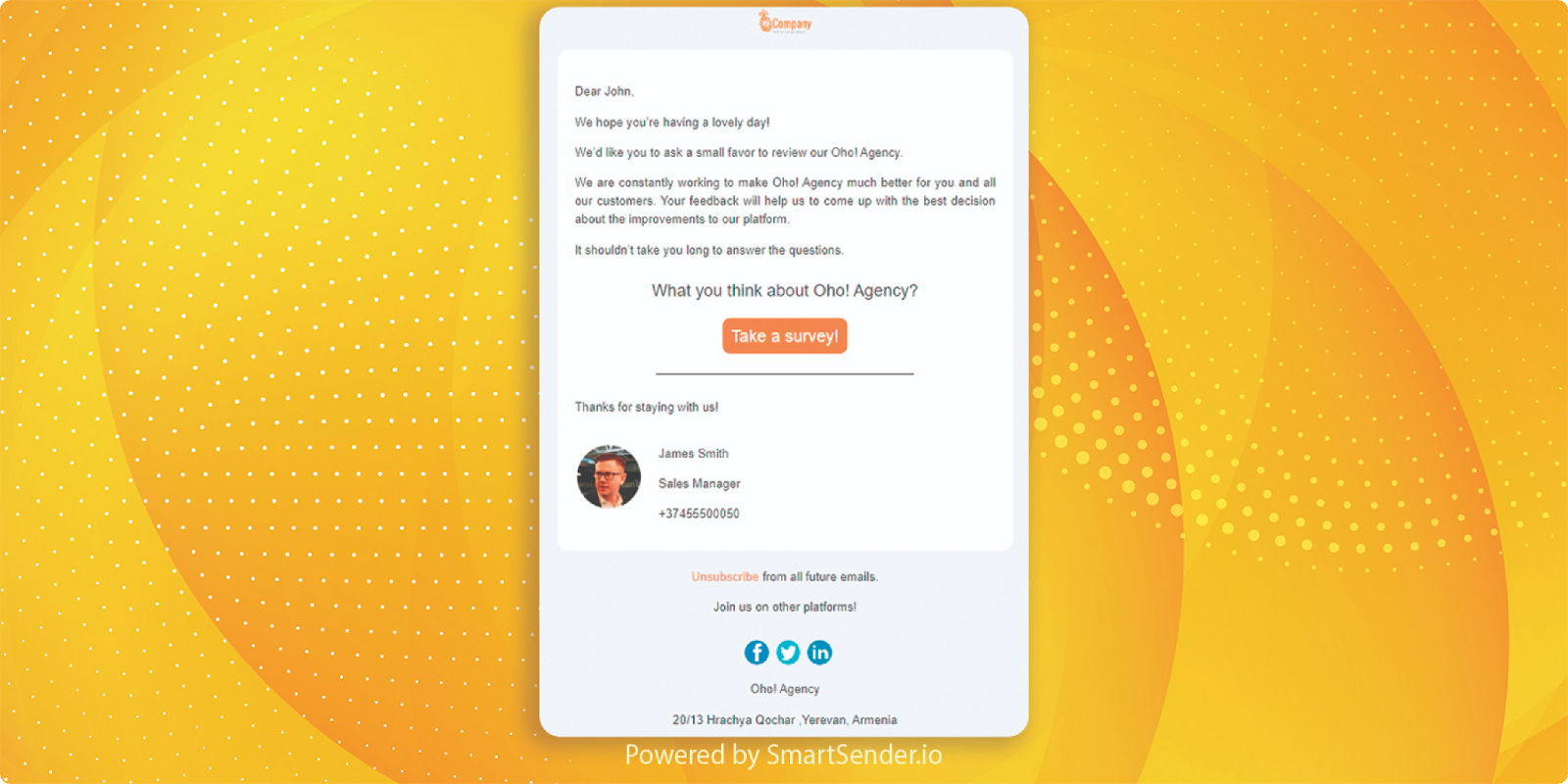
4. Mini Celebration
The onboarding phase should help you identify your customers’ needs and how to meet their expectations. Here, It’s best to set up a milestone target, and when it’s reached a certain point, you may trigger celebratory email automation.
You may even send the report of their progress with your SaaS product, but this is an optional step for onboarding.
Final Thoughts
To sum up, it becomes crystal clear how important it is to include onboarding in your business objective. It helps with product adoption, reduces customer churn, increases retention rate, and so much more.




